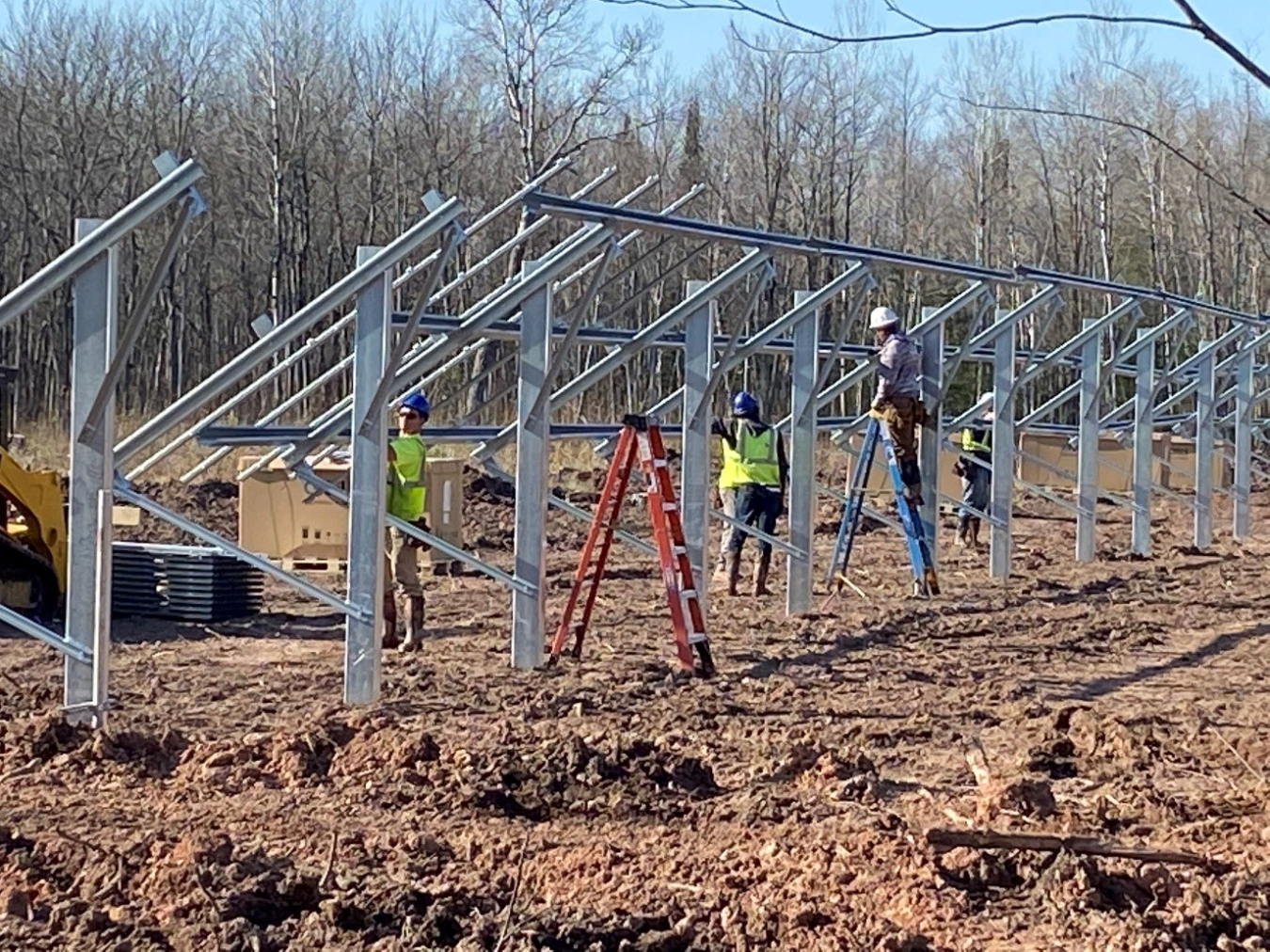Bad River Band of Lake Superior Tribe of Chippewa Indians complete the Ishkonige Nawadide Solar Microgrid Project.
Office of Indian Energy Policy and Programs
May 10, 2021Bad River Band of Lake Superior Tribe of Chippewa Indians Complete the Ishkonige Nawadide Solar Microgrid Project

On the glistening shores of Lake Superior in Northern Wisconsin, members of the Bad River Band of Lake Superior Tribe of Chippewa Indians are experiencing a renewed sense of resilience—in more ways than one.
In July 2016, severe flooding overtook the Bad River Reservation. As nearly a foot of rain inundated northern Wisconsin, the Band endured several emergency situations, including extensive power outages at critical facilities such as the Health & Wellness Center, Administration Building, and Wastewater Treatment Plant.

Severe flooding of Bad River Band property following torrential rain in 2016. Photo from Bad River Band
Following the floods, the community took steps to build back stronger, and has since increased its energy resilience through planning, developing, and installing a solar energy and battery storage system. Known as the Ishkonige Nawadide Solar Microgrid Project ("It Catches Fire" in the Band’s language), the system is designed to withstand future power outages from disasters similar to—or worse than—what the Band experienced in 2016.
"We’re more than positive that when an outage does happen, these [community] buildings will be able to be supported. We built solar panels at a level that could withstand another 500-year flood. They are built for the worst event that could happen," said Daniel Wiggins, Jr., Tribal member and project lead for the Ishkonige Nawadide Solar Microgrid Project.
Supported by grant funding from the U.S. Department of Energy's Office of Indian Energy, the roughly $2-million-dollar project is a 500-kilowatt (kW) solar microgrid installation with more than 1,000 kilowatt-hours (kWh) of battery storage. Planning began in late 2019, just months before the global COVID-19 pandemic hit.
The project was built around resiliency and the ability to respond to outages during community events or crisis. It was important to keep this project moving.
COVID-19 forced the Band and technical team to reassess the reality of the project. In March 2020, when the Band declared a local State of Emergency for the immediate health implications and risks associated with the COVID-19 pandemic, there were many questions to answer. Should they stop entirely? Should they continue work with restrictions? With much uncertainty, they decided to move forward.
"The Ishkonige Nawadide Project was built around resiliency and the ability to respond to outages, many times during community events or crisis. The thought of things not getting better made the team work harder. It was important to keep this project moving," Wiggins said.
The project team was the very definition of resilience as it put every precaution into place, including regular testing for the virus, physical distancing guidelines, temperature checks, face coverings, virtual meetings, and shifting hours to do work overnight when community foot traffic was lowest. The team took every step necessary to ensure the safety and protection of everyone involved to get the job done.

Construction underway on the Ishkonige Nawadide Solar Microgrid Project. Photo from Daniel Wiggins, Jr.
They learned valuable lessons, especially in having open communication and transparency. It was important that everyone was learning together—not just about how to manage COVID-19, but how to complete such an important renewable energy project.
"Since this was the Band's first large renewable energy project, everybody was learning, including the electric utility of the intricate details for a large solar array with batteries. [We had to understand how to comply] with the codes and policies," Wiggins said.
Now complete, the Ishkonige Nawadide Solar Microgrid Project stands as a symbol of community resilience and success in so many ways.

The completed Ishkonige Nawadide Solar Microgrid Project on the Bad River Reservation. Photo from Daniel Wiggins, Jr.
"Utilizing renewable energy is a big benefit. The Band taking the initiative on a cutting-edge renewable energy project is huge. It really shows the community what’s possible," said Wiggins. "I think it sets a precedent for the community—and neighboring tribes and municipalities that want to get into [renewable energy] projects like this. We’re showing people that it can be accomplished."
For more information on the Ishkonige Nawadide Solar Microgrid Project, watch a recorded video presentation from the 2020 Office of Indian Energy Program Review.

